I may get commissions for purchases made through links in this post.
Do you feel you sleep well but wake up tired anyway?
Or do you have trouble falling asleep at night?
Chances are it’s blue light that is unknowingly ruining your sleep.
Sleep researchers discovered that “[blue] light works as if it’s a drug”.
How to Block Blue Light, Boost Your Health, And Beat The Bedtime Blues
An active, energetic life is built on the basic foundations of good nutrition, healthy exercise and sufficient rest. Diet and exercise receive a lot of attention, but the importance of rest and good sleep is often overlooked.
It’s even worse, we often think we sleep well enough when, in fact, we don’t.
It’s just assumed that an active person will become tired and fall asleep every evening. That’s a poor assumption.
The part about getting tired after a busy day is certainly accurate, but the falling asleep part isn’t a given.
In fact, certain aspects of our modern society make falling asleep more difficult than it has ever been in human history.
What’s more, even if you do fall asleep quickly blue light may wreak havoc on the quality of your sleep.

Why we sleep less in terms of quantity and quality
Sleepless in America: Tracing the Causes
Modern conveniences make it easy to choose wakefulness over sleep. Twenty four-hour TV channels, constant social media interaction and things to do at all hours of the day and night are keeping us awake.
This constant busy-ness cuts into our sleeping hours and adds to the stress, which also affects sleep quality.
So if you were wondering why you are waking up tired and feel the need to sleep some more, consider an unlikely culprit: the blue light that comes from electronic devices and energy-efficient lights around you.
“Drastic changes in the modern lifestyle have altered sleep patterns profoundly, and many of these changes may be contributing to major health issues”.
Lighting technology has made it convenient to extend daytime hours so that people no longer need to queue their activity schedules to sunrise or sunset.
Given how busy everyone’s schedule can be, carving out extra time by cutting back on sleep is a coping strategy, yet it has led to stress, chronic fatigue and dissatisfaction with life in general.
In the distant past, our ancestors were all early-to-bed, early-to-rise types. When the sun set, they went to sleep. When the sun came up, they awoke. It’s the way we evolved, and it’s built into the chemistry of our brains.
“The modern environment is filled with artificial light well past dusk, disrupting the rhythm that the human body has been used to for many generations.”
A widespread problem
This is an all-too common problem as a National Sleep Foundation survey indicated that at least 75 percent of respondents admitted to sleeping six hours or less on any given night.
In truth, 40 million Americans have experienced 70 different types of sleep disorders, leading to a large swath of the population that is chronically tired and sleep deprived. A major part of this can be solved by blocking blue light.
How blue light ruins your sleep
Light continues to flood the retina, blocking melatonin production and interfering with circadian cycles and sleep patterns.”
Your body runs on its own clock. Circadian rhythm is the term for your body’s process to distinguish between sleep time and wake up time.
It is hard-wired into your system so that your body can tell playtime from nap time. The switch for this system is the melatonin hormone.
It is light-sensitive so that production kicks up only when sensors in the eyes detect fading daylight. Higher levels of melatonin slow down your system and signal that it is time to sleep.
Artificial light extends the daylight hours, which means more time to play. It comes in various wavelengths, but blue light, such as those emitted by LED lamps, affects melatonin production significantly.
If you have been spending extended time on your tablet or computer before going to bed, don’t be surprised if you have trouble falling asleep.
The benefits of blue light
To be very clear, blue light has its advantages especially in daytime when it has been shown to enhance alertness, cognition and concentration.
- Did you ever wonder why police car lights strobe with blue? One reason is that blue lights have been shown to dramatically increase alertness.
- Blue wavelengths in sunlight improve our performance and our mood, and that may be one reason why consumers gravitate to bulbs with bluer spectrums.
- It’s also why the increasingly popular artificial dawn alarm clocks use blue light.
The bane of blue light (at night)
However, in the evenings, your body should be allowed to wind down to achieve restorative sleep, so it is important to have a plan to block blue light to sleep better. Here’s exactly why:
Light-sensitive melatonin is affected by any type of light, but studies have shown that the effects are more pronounced with blue light.
Blue wavelength is most commonly emitted by electronic gadgets and energy-efficient lighting systems such as LED light sources.
Blue light emitted by modern-day lamps
Blue LED lighting was introduced in the 1990s, and electronic devices, including television sets, computers, cell phones and tablets have since been designed with blue-light technology.
Lights can now be purchased to emit specific wavelengths or “temperatures,” and many people find “daylight” bulbs to have a more natural appearance. These bulbs emit light with a greater percentage of blue light than “warm” or “soft” lamps.
With LED-based energy-efficient lighting and the constant presence of electronic devices, people are now exposed to blue light even more. Back in the day, candles and lanterns didn’t alter circadian rhythms much.
Different versions of electricity-dependent artificial lighting have been in use since the 1800s. However, earlier versions of artificial lamps were based on red wavelengths.
Studies on blue light and sleep
A study conducted by scientists at Switzerland’s University of Basel compared the effects of pre-bedtime exposure to old-style, fluorescent-lit monitors to newer LED monitors.
The subjects were required to sit in front of the monitors for five hours each night. Melatonin levels in the blue light-exposed group did not rise as quickly and levels were suppressed for the rest of the night.
Cognitive abilities and memory appeared to be sharper when subjects were exposed to blue light, suggesting that blue light enhances brain activity partly because melatonin production was inhibited.
When the brain is prompted to alertness around bedtime, the body is unable to dial down the stimulus that keeps the body alert, resulting in difficulty falling asleep if not poor sleep quality.
Which is….
Why blue light is like stimulant drugs
George Brainerd, Thomas Jefferson University neurologist and one of the first to link hormone production, circadian rhythm and exposure to light, compares the action of light to the way drugs affect the body.
Light is not a drug, of course, but it may trigger similar biochemical processes, making it important to find ways to block blue light to sleep better.
Researchers at China’s Sichuan University came to the same conclusion following the implantation of blue-light blocking lenses into cataract patients.
The sleep patterns of these patients were monitored pre- and post-implantation. Not surprisingly, patients were found to be sleeping longer and better with the blue-light blocking lenses in place.
At Quebec’s Universite Laval, scientists found that late shift workers who were asked to wear blue-light blocking glasses toward the end of their shift managed to block blue light to sleep better and longer.
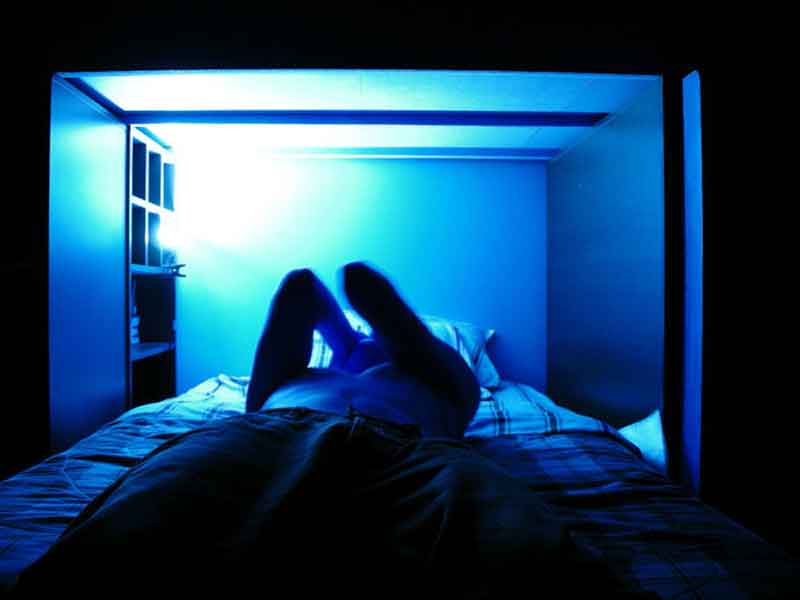
Sleep Patterns Explained
Sleep needs vary from one individual to the next. Adults can typically tolerate 16 hours of being awake given an eight hour stretch of quality sleep at night.
However, some adults may be functional with six or less hours of sleep while others may require 10 hours for peak performance. Given the hectic pace of modern lifestyles, six to seven hours of sleep sounds like a luxury.
Indeed, a report from the National Institutes of Health confirms that adults may be averaging seven hours of sleep per night. The recommended number of sleep hours for anyone 18 and older is anywhere from eight to nine hours.
The need for sleep does not decline with age but the ability to sleep fitfully for extended hours appears to regress as one gets older.
For geeks, the technical explanation
(non-geeks, skip this part except if you need to be bored to sleep)
To understand why blue light messes with our sleep it’s import to understand some basic information about biochemistry, neurology, and our wake/sleep cycle.
Throughout the course of a day, certain mental and physiological changes occur in our bodies. This daily cycle, called circadian rhythm, is largely controlled by a tiny pair of neuron-dense structures in the brain called the suprachiasmatic nucleus (SCN).
The SCN is a sort of master clock in our head, and it produces certain proteins that go through a biochemical cycle of about 24 hours.
The biochemical cycle of these proteins determines our daily pace for the production or destruction of some very important hormones.
Two of these hormones, serotonin and melatonin, are closely related. Melatonin makes us drowsy, and serotonin is converted to melatonin by the pineal gland at night.
If that was the end of it, we’d be sleeping according to our circadian rhythms tonight as well as our great-great-grandfathers did in their own times, but there’s a little more to it than that.
The activity of the pineal gland is also affected by light. The SCN packs more than 20,000 neurons into an area of the brain the size of a pinhead. Like all nerve cells, these neurons process and transmit information through electrical and chemical signals.
When light enters our eye and strikes the retina, photoreceptors generate a signal that is sent to the SCN along the optic nerve. The SCN responds by sending signals of its own to the pineal gland, among other places, and the pineal gland responds by decreasing the conversion of serotonin to melatonin.
The bottom line
For most of human history, daily exposure to sunlight and periods of darkness dictated the operation of the SCN and the production of melatonin.
We need to block blue light to sleep better, and modern lighting may not even be the worst of it. Electronics, like smartphones, tablets, televisions and computer screens, emit a lot of light in the blue spectrum.
Think of someone you’ve seen looking at a smartphone in a movie theater, and you’ll probably envision a bluish glow.
Don’t take this too lightly (excuse the pun)
Multiple studies have shown a correlation between reduced melatonin production and far worse things than insomnia.
Obesity, mental illnesses and even cancer – three broad health issues that are in the news every day – have been linked with sleeplessness.
8 Tips On How to block blue light at night
Do you have to kick your smartphone habit during the evening?
Is civilization doomed? Do we have to revert to the lifestyles of our agrarian forefathers, eschewing modern lighting and going to bed at sunset, if we want to be healthy and energetic?
Are we saying that smartphones and tablet use has to cease when the sun sets? Those would be two ways of dealing with the problem, but they aren’t very practical solutions now are they?.
There are, however, simple steps that anyone can take to block blue light and get a better night’s sleep.
1. Change your light bulbs
Bulbs are generally classified as “soft white,” emitting light in the 2700 to 3000 Kelvin range, “cool white,” emitting light in the 3500 to 4100 Kelvin range, or “daylight,” emitting light in the 5000 to 6500 Kelvin range.
Lights with higher Kelvin values appear to be brighter, whiter lights, but the actual amount of brightness, which is measured in lumens, doesn’t change.
It’s just the way our eyes perceive the light. By using warmer, softer temperatures, we reduce the amount of blue spectrum entering our eyes.
Nowadays, these warm colored light bulbs are an essential part of the wind down routine of any household with electronic devices and or LED lights. Added benefit, many also function as bug repellent lights.
Popular options are this orange Feit Electric bulb or the TCP RLAS155WY LED.
Or you could get the NASA-engineered Definity Digital Good Night bulb insomniacs swear by.
2. Unwind in the evening
Experts say that it’s a good idea to turn off the lights an hour before bedtime. Unfortunately, that “unwinding” time is usually when we do the most damage by settling down with a good book – or a good e-book reader – or in front of the television.
If reading for relaxation is a nightly habit, consider a red or orange light bulb in the reading lamp. Our eyes read well using light in that spectrum, and they emit no blue light whatsoever.
3. Reduce or adjust your electronic gadget use
Cutting down on the use of electronics would be a good step, but it may also be incredibly difficult to do. No more instagramming or twittering in bed? Yeah right, who does that.
A more pragmatic approach may be to adjust the display to cut down on the blue spectrum emitted.
Electronics screens are intentionally designed to look as though they are in sunlight. They are bright and flush with blue spectrum.
Luckily there are ways to block blue light and still use gadgets.
4. Install blue light reducing software
For those who spend hours in front of a monitor, the f.lux app is a computer program that automatically manages the color temperature on monitors provided location-based data is provided by the user. It cuts down on eye strain-inducing glare and reduces disruption of normal circadian cycle.
Apps like f.lux or Twilight are for people who realize that they probably shouldn’t be looking into sunlight at 10:00 at night if they want to get to sleep.
- With f.lux running in the background, the color of a laptop, tablet or monitor screen automatically adjust according to the time of day.
- During daylight hours, the screen is bright and sunny. As the day progresses, the screen colors become warmer and less blue.
This approach significantly reduces the impact of electronic screens on the sleep cycle, and it’s also great for reducing eyestrain.
5. Blue light blocking screen protectors
Use blue light filtering screen protectors such the SleepShield or iLLumiShield.
6. Wear blue-blocking glasses
For hard-core tech addicts, the simplest solution may be to don some blue-blocking glasses. Amber lenses block blue wavelengths from reaching the eye. We still see, but everything has a warmer, yellow tint.
The use of blue-light blocking glasses a few hours before bedtime has been shown to normalize melatonin production even in the presence of LED lighting.
You can opt for inexpensive orange-tinged safety glasses or more pricey professional versions of blue-light blocking glasses such as Gunnar computer eyewear.
Studies have shown that subjects wearing blue-blocking glasses produce just as much melatonin as a person in a dark room, even when the person with the glasses is in a lit room or is reading electronic screens.
These are the most popular blue light blocking glasses on Amazon.
7. Keep your sleeping quarters completely dark
by installing room darkening window covers. Block street lights and other external light sources to enjoy an evening of restful sleep.
Survey the bedroom to determine the sources of artificial light. Replace LED lamps with low-wattage incandescent bulbs especially by the bedside to block blue light to sleep better.
Devices that emit blue light from power buttons and LED displays could be repositioned if not covered (i.e. with duct tape). Use night-lights to illuminate hallways and bathrooms to avoid turning on powerful overhead lights.
8. Get sufficient blue light during the day.
It is equally important to get adequate amounts of blue light in the daytime when it is helpful to your body. Catch some morning rays or use a blue-light therapy lamp to enhance your alertness level.
Being alert and productive during the day improves your chances of getting quality sleep at night.
Convinced about blocking blue light at night?
If not, perhaps these last few tidbits will persuade you.
Problems Associated with Sleep Loss
Getting enough sleep is essential to good health. While occasional bouts of insomnia are not normally cause for concern, long-term sleep deficit can impact the body’s biological and chemical processes in several ways.
- When your body does not get rejuvenating sleep, your immune system suffers, making you a likely candidate for many ailments ranging from heart disease to the common cold.
Harvard Women’s Health Watch lists weight gain, elevated blood pressure, diabetes and a compromised immune system among the top health issues linked to chronic sleep loss.
- Poor sleep quality or not getting enough sleep at night manifests as lack of energy and daytime sleepiness that could interfere with routine activities such as driving, operating machinery and performing daily tasks.
According to the Department of Transportation, approximately 4 percent of highway accidents can be attributed to drivers’ inattention caused by sleepiness.
- The NSF study also cited that 69 percent of children experienced one or more sleep problems at least once during a week.
- Children and young adults who do not get enough sleep cannot focus on schoolwork, feel tired all the time and unable to cope with normal social interactions.
- Lack of sleep may also contribute to depression and mood disorders.
More sleep tips and hacks to boost your overall wellbeing:
How To Sleep Better At Night Naturally – 78 Science-Backed Tips
15 Scientifically Backed Tips To Beat the Winter Blues (SAD)
References
* The ‘blue light is drug quote’ is from George Brainard, a neurologist at Thomas Jefferson University in Philadelphia and one of the first researchers to study light’s effects on the body’s hormones and circadian rhythms.
Blue light has a dark side. Harvard Health Publications
Why is blue light before bedtime bad for sleep? Scientific American.
Image 2 by Artful Krayons.

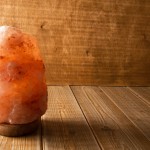

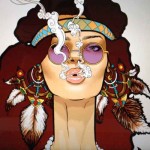
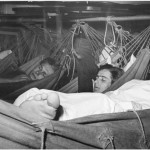
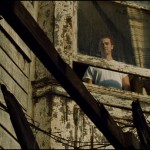
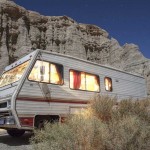
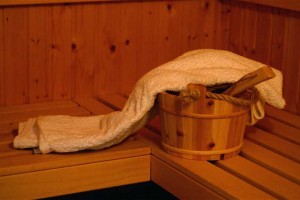
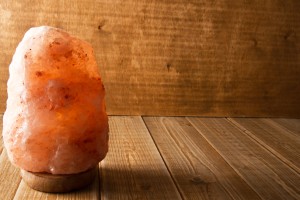
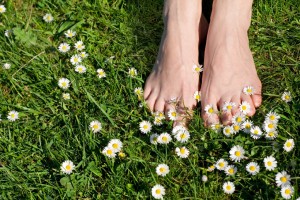

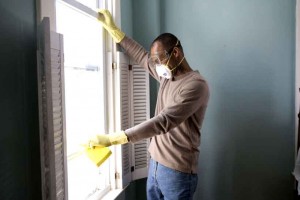
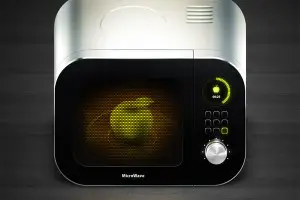
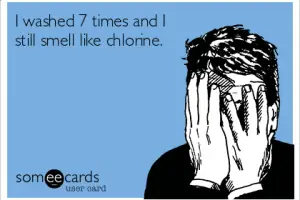


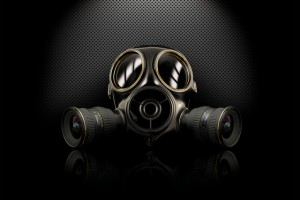






Thanks for finally talking about >Blue Light Ruins Your Sleep, Here’s How To
Block It – Critical Cactus <Loved it!